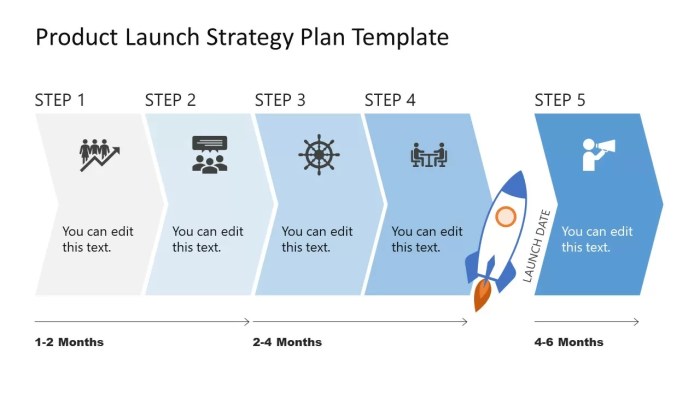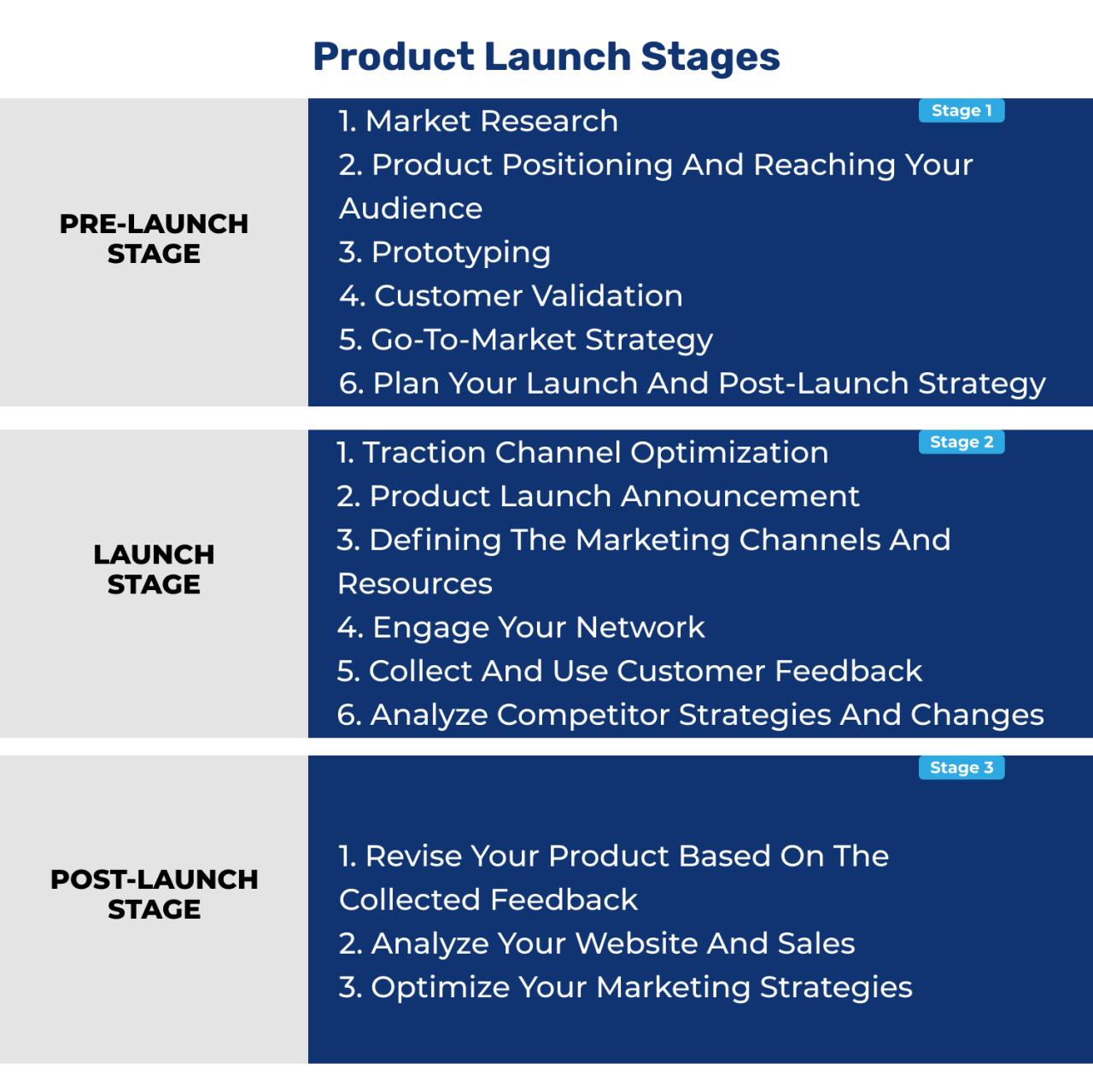Product Launch Strategies: Get ready to dive into the ultimate guide on dominating the market with killer tactics and innovative ideas. From pre-launch buzz to post-launch momentum, this is your ticket to success in the fast-paced world of product launches.
Product Launch Strategies

When it comes to introducing a new product to the market, having a well-defined product launch strategy is crucial for creating buzz, generating excitement, and ultimately driving sales. A strategic approach can help companies stand out in a crowded marketplace, capture the attention of their target audience, and maximize the impact of their launch efforts.
Examples of Successful Product Launch Strategies
- Apple’s launch of the iPhone: Apple is known for creating anticipation and hype around their product launches through secretive press events, teaser campaigns, and limited pre-orders.
- Nike’s collaboration with celebrity athletes: Nike often partners with high-profile athletes like Serena Williams or Michael Jordan to create limited edition products that generate buzz and drive sales.
Key Components of a Product Launch Strategy
- Setting clear goals and objectives for the launch
- Identifying the target audience and understanding their needs and preferences
- Developing a compelling brand story and messaging
- Creating a multi-channel marketing plan to reach customers through various touchpoints
- Establishing metrics to measure the success of the launch and make adjustments as needed
Market Research’s Role in Shaping Product Launch Strategies
Market research plays a crucial role in shaping product launch strategies by providing insights into consumer behavior, market trends, and competitive landscape. By conducting thorough research, companies can better understand their target audience, identify market gaps, and tailor their product offerings to meet customer needs. This data-driven approach can help companies make informed decisions, mitigate risks, and increase the chances of a successful product launch.
Pre-Launch Phase

In the pre-launch phase of a product, it is crucial to set the stage for a successful launch by generating excitement and anticipation among potential customers. This phase is all about creating a buzz and building momentum leading up to the big reveal.
Activities in the Pre-Launch Phase
- Market Research: Conduct thorough market research to identify your target audience and understand their needs and preferences.
- Build Hype: Utilize social media platforms, email marketing, and influencers to tease the upcoming product and generate curiosity.
- Create Teasers: Release sneak peeks, teasers, and behind-the-scenes content to give a glimpse of what’s to come.
- Pre-Launch Events: Organize exclusive pre-launch events, webinars, or demos to engage with potential customers and create excitement.
Significance of Building Anticipation
- Creates Demand: Building anticipation helps create a sense of urgency and excitement, driving demand for the product.
- Generates Buzz: Anticipation generates buzz around the product, increasing awareness and interest among potential customers.
- Establishes Credibility: A well-executed pre-launch phase can establish credibility for the product and the brand, setting the stage for a successful launch.
Tips for Creating a Buzz, Product Launch Strategies
- Use Cryptic Messaging: Create mystery and intrigue by using cryptic messaging in your teasers and sneak peeks.
- Engage Influencers: Collaborate with influencers or industry experts to amplify the reach of your pre-launch content.
- Run Contests: Organize contests or giveaways to engage with your audience and incentivize them to spread the word about the upcoming product.
Role of Teasers, Sneak Peeks, and Pre-Launch Events
- Teasers: Teasers are short, intriguing clips or messages that provide a glimpse of the product without revealing too much, creating curiosity and anticipation.
- Sneak Peeks: Sneak peeks offer a sneak peek into the features, design, or functionality of the product, building excitement and interest among potential customers.
- Pre-Launch Events: Pre-launch events allow you to engage with your audience, gather feedback, and create a sense of exclusivity around the upcoming product.
Launch Event
When it comes to a successful product launch event, there are several key elements that can make a big difference. From choosing the right venue to leveraging social media and influencers, every detail counts in creating a memorable launch event.
Importance of choosing the right venue
One of the most critical decisions for a product launch event is selecting the perfect venue. The venue sets the tone for the event and can greatly impact the overall experience for attendees. Whether it’s a trendy rooftop bar, a chic art gallery, or a high-tech conference center, the venue should align with the brand image and target audience.
Leveraging social media and influencers
Utilizing social media and influencers during a product launch event can significantly increase visibility and reach. By creating buzz online before, during, and after the event, companies can generate excitement and engage with a wider audience. Collaborating with influencers who align with the brand can also help amplify the message and create genuine interest among their followers.
Creative product launch event ideas
- Interactive product demos with virtual reality experiences
- Limited edition pop-up shops in trendy locations
- Themed launch parties with live music and entertainment
- Collaborations with local artists for unique product displays
Post-Launch Strategies
After the product launch event, it is crucial to have a well-thought-out post-launch strategy to maintain momentum and ensure continued success. This phase includes activities such as gathering feedback, reviews, sustaining momentum, and addressing any challenges or negative feedback effectively.
Gathering Feedback and Reviews
- Encourage customers to provide feedback through surveys, reviews, and testimonials.
- Monitor social media and online platforms for customer reviews and comments.
- Analyze the feedback received to identify areas for improvement and future product development.
Sustaining Momentum
- Continue engaging with customers through social media, email marketing, and promotions.
- Introduce new features, updates, or special offers to keep customers interested and engaged.
- Create a loyalty program or incentives to encourage repeat purchases and referrals.
Handling Challenges and Negative Feedback
- Address any negative feedback promptly and professionally, showing customers that their concerns are taken seriously.
- Offer solutions or compensation to dissatisfied customers to regain their trust and loyalty.
- Use negative feedback as an opportunity for improvement and strive to prevent similar issues in the future.






